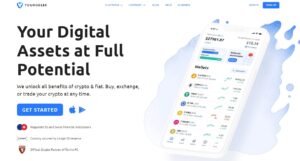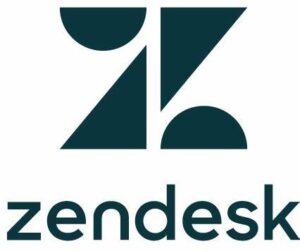Introduction
In today’s fast-paced and digitally-driven world, providing exceptional customer service is crucial for the success of Vany business. With the increasing demands and expectations of consumers, companies are constantly looking for ways to improve their customer service game. One tool that has been gaining popularity among businesses of all sizes is Zendesk. But how to use Zendesk for customer service and make the most out of its features? In this blog post, we will explore expert advice on leveraging Zendesk features to elevate your customer service and provide a seamless experience for your customers.

Understanding the Importance of Stellar Customer Service
Customer service plays a pivotal role in the success of any business. It has the power to make or break customer loyalty, impact brand reputation, and ultimately drive revenue. In today’s highly competitive market, providing exceptional customer service is not just a nice-to-have, but a necessity.
So, how can businesses ensure they deliver stellar customer service? One powerful tool that can help is Zendesk. Zendesk Support is a customer service platform that allows businesses to manage their customer interactions seamlessly. It provides a centralized hub for all customer inquiries, ensuring nothing slips through the cracks.
Using Zendesk effectively involves understanding the importance of stellar customer service. By prioritizing customer needs and focusing on providing personalized and timely support, businesses can build trust and loyalty with their customers. Zendesk offers features such as ticket management, live chat support, and self-service options, all of which can enhance the customer experience.
By investing time and resources into training and educating customer service teams on using Zendesk, businesses can maximize the platform’s potential. They can learn how to efficiently handle customer inquiries, resolve issues promptly, and provide proactive support.
An Overview of Zendesk and its Powerful Customer Service Features
Zendesk is a customer service platform that offers a wide range of features to help businesses elevate their customer service game. With Zendesk Support, businesses can effectively manage all customer interactions in a centralized hub, ensuring a seamless experience for both customers and support agents.

One of the key features of Zendesk is its ticket management system. This allows businesses to efficiently track and organize customer inquiries, ensuring that no customer concern goes unnoticed or unresolved. With Zendesk Support, businesses can easily assign tickets to specific agents, track their progress, and prioritize urgent issues.
Another powerful feature of Zendesk is its live chat support. This enables businesses to provide real-time assistance to customers, answering their questions and addressing their concerns instantly. Live chat support can significantly improve customer satisfaction by offering quick and personalized support.
In addition to ticket management and live chat, Zendesk also offers self-service options. With the help of knowledge bases and FAQs, businesses can empower their customers to find answers to common questions on their own, reducing the need for direct support and enabling self-reliance.
Using Zendesk effectively requires businesses to invest time and resources into training and educating their customer service teams. By understanding how to use Zendesk for customer service, agents can efficiently handle customer inquiries, resolve issues promptly, and provide proactive support.
How to Setup Your Zendesk Account for Optimal Customer Service
When it comes to setting up your Zendesk account for optimal customer service, there are a few key steps you can take to ensure a smooth and efficient experience.
First, it’s important to start by customizing your Zendesk settings to align with your specific business needs. This includes setting up your organization’s branding, such as your logo and colors, to provide a consistent and professional look across all customer interactions. You can also configure your email notifications, ticket fields, and user roles to streamline your workflow and ensure everyone has the appropriate access and permissions.
Next, take the time to properly set up your ticketing system. This involves creating ticket forms, which allow you to collect specific information from customers when they submit a ticket, such as their contact information or the nature of their inquiry. You can also create custom ticket views, which help you prioritize and organize tickets based on criteria that are important to your business.
Additionally, make use of Zendesk’s automation features to save time and increase efficiency. By setting up triggers, you can automate actions and notifications based on specific events or conditions, such as automatically assigning a ticket to a certain agent or sending a follow-up email to the customer after their issue has been resolved.
Lastly, don’t forget to integrate Zendesk with other tools and platforms that your business uses. Zendesk offers a wide range of integrations, including with popular CRM systems and communication platforms, allowing you to streamline your customer service operations and provide a seamless experience for both your customers and support team.
By following these steps and taking full advantage of Zendesk’s customization, ticketing, automation, and integration capabilities, you can set up your account for optimal customer service and provide a truly exceptional experience for your customers.
Leveraging Key Zendesk Features for Enhanced Customer Engagement
When it comes to providing exceptional customer service, leveraging key Zendesk features can take your customer engagement to the next level. Zendesk offers a range of features designed to enhance customer interactions and provide a seamless experience.
One important feature is the ability to integrate multiple channels of communication into a single platform. With Zendesk, you can connect with customers through email, live chat, phone calls, social media, and more, all from one centralized location. This allows you to respond to inquiries quickly and efficiently, no matter the channel.
Another feature that can enhance customer engagement is the use of automation. Zendesk allows you to set up triggers and automations to streamline repetitive tasks, such as assigning tickets to the appropriate agents or sending follow-up emails. This frees up your team’s time, allowing them to focus on providing personalized and timely support to customers.
Personalization is key to enhancing customer engagement, and Zendesk offers features to help you achieve this. With Zendesk, you can create customer profiles that include their contact information, previous interactions, and any other relevant data. This allows you to tailor your responses to each customer’s specific needs, providing a more personalized and memorable experience.
In addition, Zendesk’s reporting and analytics features can help you understand your customers better and identify areas for improvement. By tracking metrics such as response times, customer satisfaction ratings, and ticket resolution rates, you can gain valuable insights into your customer service performance and make data-driven decisions to enhance engagement.
By leveraging these key Zendesk features, you can create a customer-centric environment that fosters enhanced engagement and satisfaction. Providing personalized and efficient support across multiple channels, streamlining workflows through automation, and utilizing data-driven insights will elevate your customer service game and set your business apart from the competition.
Utilizing Zendesk Integrations for an Efficient Customer Support Workflow
One of the key advantages of Zendesk is its ability to integrate with other tools and platforms, allowing businesses to create a seamless and efficient customer support workflow. By utilizing Zendesk integrations, businesses can streamline their processes, improve communication, and enhance the overall customer experience.

For example, integrating Zendesk with a customer relationship management (CRM) system can provide a comprehensive view of each customer’s history, interactions, and preferences. This allows support agents to deliver personalized and tailored assistance, resulting in increased customer satisfaction and loyalty.
Additionally, integrating Zendesk with communication platforms such as Slack or Microsoft Teams enables real-time collaboration among support teams. Agents can easily communicate, share information, and collaborate on resolving customer issues, leading to quicker response times and improved resolution rates.
Another useful integration is with knowledge management systems. By connecting Zendesk with tools like Confluence or SharePoint, businesses can easily access and share knowledge articles, FAQs, and other self-service resources. This empowers customers to find answers to their questions on their own, reducing the number of support inquiries and improving efficiency.
Furthermore, integrating Zendesk with survey tools like SurveyMonkey or Qualtrics allows businesses to collect valuable feedback from customers. This feedback can be used to identify areas for improvement, measure customer satisfaction, and drive strategic decision-making.
By leveraging Zendesk integrations, businesses can optimize their customer support workflow, enhance collaboration, and provide a seamless and efficient experience for both customers and support teams.
Monitoring and Improving your Customer Service Performance with Zendesk Analytics
When it comes to delivering exceptional customer service, monitoring and improving your performance is key. This is where Zendesk Analytics comes into play. With Zendesk Analytics, businesses can gain valuable insights into their customer service operations and make data-driven decisions to enhance their performance.
By analyzing metrics such as response times, ticket resolution rates, and customer satisfaction ratings, businesses can identify areas for improvement and implement strategies to enhance their customer service. For example, if the average response time is higher than desired, businesses can allocate more resources to ensure quicker response times. If ticket resolution rates are low, businesses can provide additional training to their support agents or streamline their workflows.
Zendesk Analytics also allows businesses to track trends and patterns in customer inquiries. This can help identify common issues and proactively address them, reducing the number of support inquiries and improving the overall customer experience.
Additionally, businesses can use Zendesk Analytics to measure the impact of any changes or initiatives implemented in their customer service approach. By tracking key metrics before and after the implementation, businesses can assess the effectiveness of their efforts and make adjustments if necessary.
In conclusion, Zendesk Analytics is a powerful tool for monitoring and improving your customer service performance. By leveraging the insights provided, businesses can make data-driven decisions, identify areas for improvement, and ultimately provide a seamless and exceptional customer experience.


